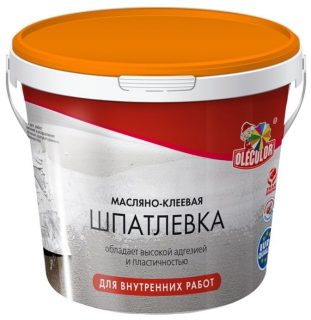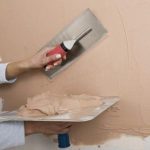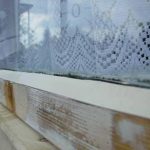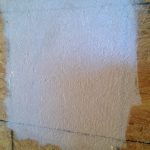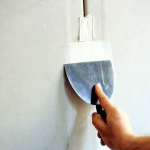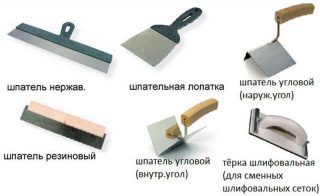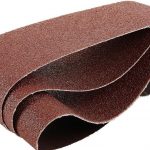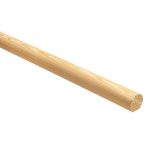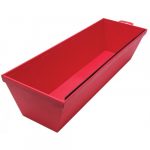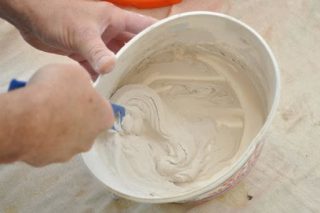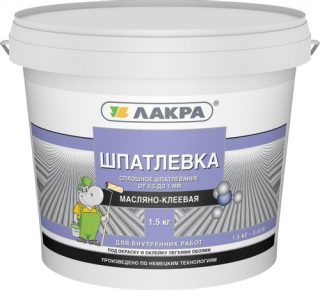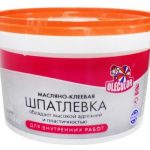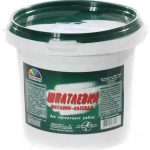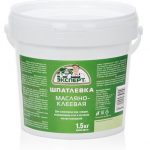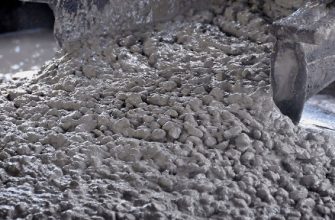Oil-glue putty was widely used for leveling walls during the Soviet Union. Due to its cheapness and availability, the material is widespread to this day. It is used for interior work when preparing the base for wallpapering or applying some types of coloring compositions.
Features and properties of the material
Sometimes, instead of linseed oil from natural oil, its technical options are used in production, containing a large percentage of third-party substances. In this case, the environmental friendliness of the product is reduced and it may have an unpleasant odor.
Also introduced into the mixture antiseptic and plasticizing additives.
The product has such characteristics:
- the duration of complete drying is 24 hours;
- drying time between approaches when applied in several layers - 4 hours;
- dry residue percentage - 70-80%.
The mixture should be stored in a well-closed container at temperatures above freezing.
The layer applied once must not be more than 2 mm thick, otherwise the coating will fall off in pieces.
Scope of application
Oil putty is used for interior work only. The main scope of its application is leveling surfaces (concrete, brick, plasterboard, wooden) for subsequent painting or wallpapering.
The putty is suitable and for sealing small cracks, restoring furniture and processing wooden window frames... It can be used in any residential or commercial area, as long as the walls are not subject to significant mechanical stress.
Mixture compatible with many types of bases - bricks, concrete and others. But it cannot be attributed to universal products - it not used with some decorative finishes. It can be used to treat surfaces for painting with oil, enamel, water-dispersion compositions, as well as for wallpapering.
Recommendations for working with oil-glue putty
The glue putty should only be applied in a sufficiently warm and dry room: temperature above +10 degrees, humidity below 70%... Moreover, in the process of work, it should be well ventilated.
Compounds containing oil can be highly flammable, so it is prohibited to use the putty near an open flame.
Required tools
- emery cloth for grinding;
- a set of spatulas of different sizes: large - for applying to the wall, small - for a set from a container, angular - for processing the corresponding places;
- a stick made of wood for stirring the composition before applying;
- a small container where portions of the putty are deposited before application.
Wear rubber gloves on your hands.If sanding of the surface is supposed, the respiratory organs are protected with a respirator.
Preparation of the base
Dilution and application of the mixture
Putty is sold in plastic cans ready to use, so there is no need to prepare a building mixture in this case. Having opened the container, the product needs stir with a stick... If it seems too thick, you can dilute with natural drying oil to the required state. The instructions usually give directions as to the dilution proportions.
Apply the mixture in a thin layer using a spatula. The thickness should not exceed 2 mm. Violating this rule is permissible only in areas with serious differences.
Drying time
Grind the surface need to 7-8 hours after application. There is no need to wait for complete drying, which occurs in a day, since in this case the process will go much more difficult. If the putty is planned to be applied in 2-3 thin layers, maintain an interval of 4-5 hours between applications, after which the wall is sanded, dust is removed and the mixture is applied again. Before finishing, you need to wait until the putty is completely dry and apply a primer, otherwise oil stains may remain.
Manufacturers overview
- Olecolor from a Voronezh firm ABC Farben - a composition containing drying oil and PVA glue. Suitable for various types of surfaces, including wood. When dry, it forms a matte surface that is resistant to dry abrasion.
- "Magic of the rainbow" - adheres to walls made of different materials, provided that they have not been treated with other putties. It has no solvents in its composition, it lends itself well to grinding. Flexible, fills cracks.
- "Lacra" - used for leveling plastered walls. Also suitable for asbestos cement and aerated concrete blocks. It is stored for only six months and has a high consumption - 3 kg / m² for a layer of 1 mm.
- "Expert" from LKP "Descartes" - used to work with wood and some materials based on it. Also suitable for filling cracks in brick or concrete walls.

